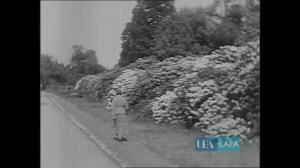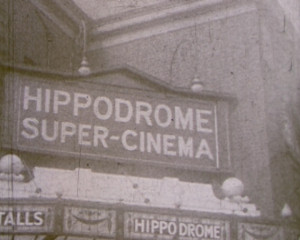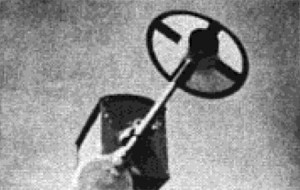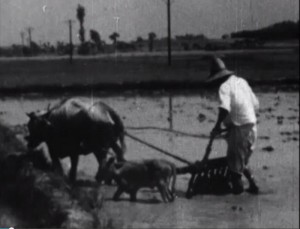"A man is shot, the gun is handed to an innocent lad who is promptly grabbed by a police officer. Rex Malloy is asked to defend the young man. Money is available to Rex if he will not defend the boy. Rex is much concerned, money vs. professional conscience. In a moment of sleep, head on hands on the desk, his subconscious finds a way to remind him of his duty" PSA Journal, Nov. 1960, 42.
"A black-and-white silent animation, which Kaneko himself described as a visualization of a musical score, Hungarian Rhapsodie. He experimented with visual geometric abstraction as a means to express the musical score, and this film was his first attempt to use the koma-otoshi technique (the technique being used for time-lapse photography or stop-motion animation)." - Noriko Morisue, "Filming the Everyday: History, Theory, and Aesthetics of Amateur Cinema in Interwar and Wartime Japan" (Yale University: PhD Dissertation, 2020): 99.

"A short film featuring two brief sequences. The first Near Latimer features cattle in a field. The second Rhododendron Time comprises Eunice Alliott walking alone and with a Chow Chow in the gardens of Ashridge House." (EAFA Database)

"Amateur filmmaker, cinema historian and railway engineer H.A.V. Bulleid pays tribute to his dual loves of cinema and rail in an experimental short film. Bulleid uses 'metric editing' - the first of Russian director Sergei Eisenstein's 'methods of montage' - in which cuts are dictated by the number and sequence of frames, not what occurs on screen. First, Bulleid pays tribute to cinema, featuring the facades of picturehouses around Derby in static shots, which build to a dazzling crescendo of short shots. The section on trains features longer views of the railyards in operation, with trains shunting and coming into the station, before a final section focuses on trams, following electric streetcars as they move down urban streets" (EAFA Database).

"Jack Pashkovsky must love the iron horse to muster the patience to gather the many scenes of the rails. A young girl (perhaps his daughter), bag in hand, boards the train for a distant trip to lend continuity. We see the train(s) at the station, in the hills, fields, valleys, desert, tunnels, bridges-just about every place where a train can be seen. The audience is permitted to view the panorama from high and low places, atop the train, and from the cab. A study of trains in motion which holds interest throughout" PSA Journal, Nov. 1958, 48.

"Documentary: On peasant farm life in Korea, the rice crop and family labor." National Archives.
"'Rice,' a three reel subject in the educational class entered by F. C. Ells of Yokohama, Japan, demonstrated a fine appreciation of production and photographic values as well as how to combine it so as to make entertainment. Many were of the opinion that this picture, if it were in 35mm, would be worthy of professional theatre presentation." American Cinematographer, Dec. 1933, 321.
"Rice and Farmer depicts the life and toil of the Japanese who raise rice for a living. Ueda, who made the film, has a keen eye for composition. Few filmers today pause long enough to look for a pleasing view through the lens before pressing the trigger, but this is one of Ueda's strong points, and his film is a joy to see for this one aspect alone" PSA Journal, Aug. 1967, 37.
"Rice Harvest in Japan by James and Veda Linford, PSA members of Oakland, Calif. The Linfords have presented another pirze film to go along with their former winners. This 8-minute 16mm film was awarded a Ten Best Medal" PSA Journal, Nov. 1971, 41
Total Pages: 299